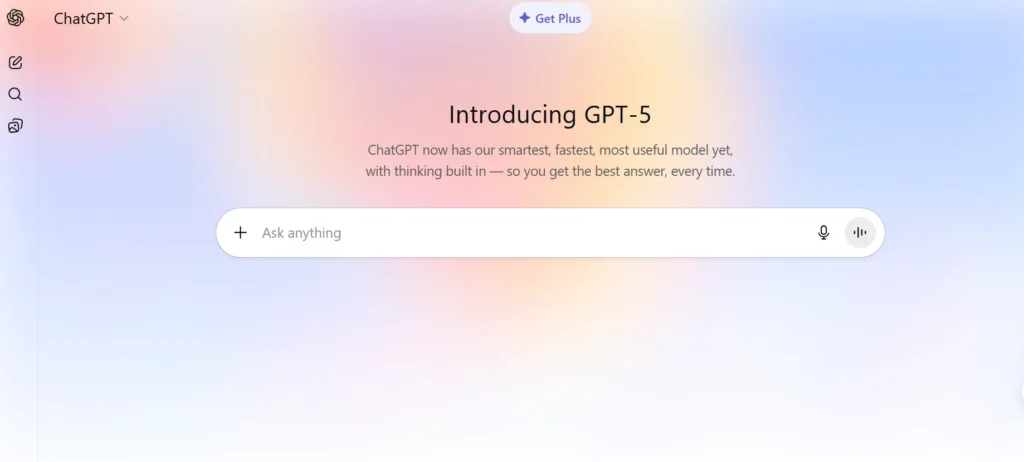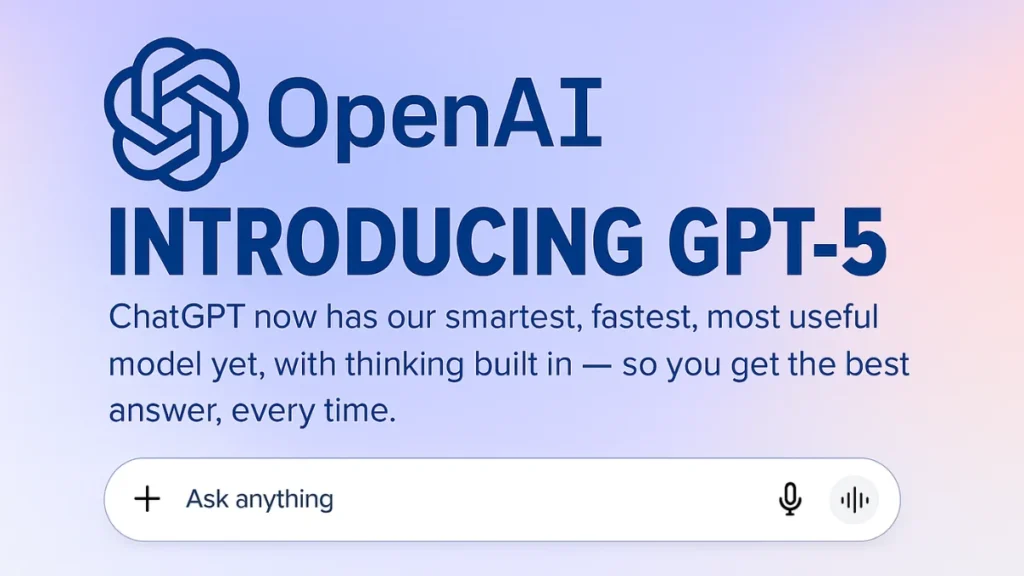OpenAI has officially rolled out GPT-5, the long-anticipated upgrade to its AI powerhouse, ChatGPT. With promises of expert-level intelligence, faster reasoning, and enterprise-ready applications, the launch arrives as Big Tech doubles down on AI investments — but will it deliver the returns Wall Street expects?
Key Takeaways
- GPT-5 is now available to all 700 million ChatGPT users worldwide.
- Built for enterprise-grade capabilities — from finance to health to on-demand coding.
- Debuts OpenAI’s “test-time compute” tech for deeper reasoning on tough problems.
- Launch lands amid $400B+ annual AI infrastructure spend by tech giants.
- Experts say leap over GPT-4 is notable, but not as dramatic as past upgrades.
OpenAI has pulled the curtain back on GPT-5, its newest artificial intelligence model and the latest evolution of the technology behind ChatGPT. Starting today, the update will be available to the chatbot’s 700 million global users, marking what CEO Sam Altman calls “the first time you can ask a legitimate PhD-level expert anything — instantly.”
This release isn’t just a consumer play. It’s aimed squarely at enterprise adoption, with OpenAI promoting GPT-5’s ability to tackle complex software development, financial analysis, and even specialized health queries. In live demos, the system generated fully functional software from simple text prompts — a concept Altman dubbed “software on demand,” which he believes could define the GPT-5 era.

The High-Stakes Timing
The GPT-5 launch lands at a pivotal moment for the AI sector. Big Tech leaders — including Alphabet, Meta, Amazon, and Microsoft (OpenAI’s key backer) — are collectively pouring nearly $400 billion into AI infrastructure this fiscal year. The hope? That enterprise AI adoption will justify the staggering investment in massive data centers and cutting-edge chips.
But there’s a catch. While consumer use of ChatGPT remains robust, enterprise spending on AI has lagged behind expectations. Economics writer Noah Smith points out that “consumer enthusiasm alone won’t pay for $400B worth of AI data centers.”
OpenAI itself is in the early stages of talks that could value the company at $500 billion — a steep jump from its current $300 billion. In today’s AI talent war, top researchers can command signing bonuses exceeding $100 million.
A Model That Thinks Before Answering
One of GPT-5’s defining features is its use of test-time compute, a technology that allows the model to “think longer” on complex problems before delivering an answer. When a user asks a particularly hard question, GPT-5 can allocate extra computing power to improve accuracy.
This reasoning capability — also known as a “reasoning model” — is a first for the free version of ChatGPT. “For most people, this is their first introduction to reasoning,” said Nick Turley, VP overseeing ChatGPT. “It just knows when to ‘think.’”
Not AGI… Yet
While GPT-5’s capabilities are a leap forward, Altman is clear it isn’t a step into artificial general intelligence (AGI). The model still can’t learn autonomously, a key ingredient for true human-level AI.
Two early reviewers told Reuters that while GPT-5 impressed in coding, science, and math, the jump from GPT-4 wasn’t as seismic as previous upgrades. Altman agrees that more infrastructure — both globally and locally — is needed to fully unlock AI’s potential.
The Road Here Wasn’t Smooth
OpenAI’s path to GPT-5 faced multiple hurdles. Scaling up large language models over the past two years brought:
- Data shortages, as internet-sized datasets began hitting their limits.
- Hardware-induced training failures, with long runs taking months and success only visible at the end.
These challenges prompted OpenAI to rethink its approach, leading to the adoption of reasoning models and smarter compute allocation.
A Bigger Vision
Since launching ChatGPT in late 2022, OpenAI has consistently improved its models — GPT-4 in 2023 scored in the top 10% of the bar exam, compared to GPT-3.5’s bottom 10%. GPT-5 continues that trajectory with broader application potential.
The company is betting that by making advanced reasoning free to the public, it will drive both mass adoption and enterprise interest. It’s also hoping that the “wow” factor of instant expert-level help — whether for code, finance, or creative projects — will secure its position ahead of rivals like Google’s Gemini, Meta’s LLaMA, and Anthropic’s Claude.
Conclusion
GPT-5 isn’t just another AI model drop — it’s OpenAI’s bid to bridge consumer fascination and enterprise adoption at a time when the AI industry’s $400B gamble demands proof it can pay off.
Try OpenAI ChatGPT-5
